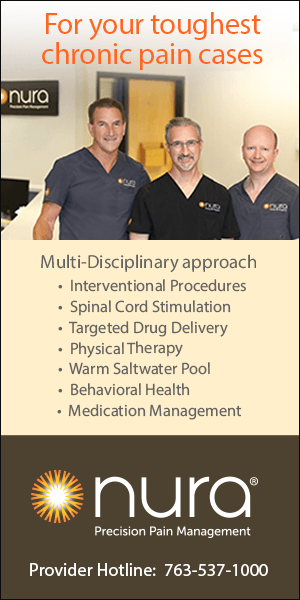n November 20, 2020, the Department of Health and Human Services (“HHS”) published sweeping rule changes to the Physician Self-Referral Law (the “Stark Law”) and the Federal Anti-kickback Statute (“AKS”). HHS previously indicated that the new final rules for the Stark Law and AKS would be not published until summer of 2021, so the announcement on November 20, 2020 came as quite a surprise. Most of the changes took effect on January 19, 2021. Physicians should be aware of the new opportunities and new obligations resulting from these changes.
cover story two
Stark Law and Anti-Kickback Statute Updates
What physicians need to know
By Antonio “Tony” Fricano, JD
New Value Based Opportunities
In 2018, HHS launched the “Regulatory Sprint to Coordinated Care” to accelerate a transformation of the healthcare system, with a focus on removing “unnecessary obstacles” to coordinated care. Some of the primary new changes to the Stark Law and AKS are intended to allow greater flexibility in structuring payments to physicians based on value based care models. The level of flexibility in the payments generally depends on the degree of financial risk involved in the arrangements, with greater flexibility being granted in arrangements where the provider assumes greater financial risk. The exact framework is beyond the scope of this article, but parties structuring compensation models should know that there is greater flexibility to pay physicians that are involved in value based care programs than there previously was.
There is more flexibility surrounding patient incentives.
In addition to greater flexibility in compensation arrangements, there is more flexibility surrounding patient incentives. Whereas previously, many patient incentives would have been prohibited as inducements, the new laws allow incentives if they further a value-based purpose for a specified patient population. The incentives allow provision of in-kind, preventative items, goods, or services, such as health related technology, patient health-related monitoring tools and services, or supports and services designed to identify and address a patient’s social determinants of health. For example, movie tickets as a reward for completing a therapy regimen will not be allowed, but onsite childcare services while a parent receives treatment will be allowed. Cash and cash equivalents (e.g. Visa gift cards) are prohibited, however vouchers and gift cards for a specific purpose are allowed (e.g. voucher for a free heart rate monitor).
Looking At The changes
The Stark Law changes are generally intended to reduce the burden on providers and also reduce technical violations and the backlog of self-disclosures that CMS has been working through since the enactment of the self-disclosure referral protocol back in 2010. For those not very familiar with the Stark Law, at a high level it prohibits referrals of certain designated health services (DHS) from physicians to providers that the physician has a financial arrangement with, unless an exception exists. The challenge with the Stark Law is that intent is irrelevant in determining whether there has been a violation and in many cases, well-meaning physicians can end up violating the law and incurring extremely high financial penalties. Here are some examples of the recent fine-tuning.
a. Group Practice Change While many of the Stark Law changes were intended to reduce provider burden, the clarification to the rules of allocating DHS profits across multi-disciplinary provider groups may require these groups to restructure their profit distribution methodologies. Fortunately these rules will not take effect until January 1, 2022, so that gives groups some time to plan. As some context, the Stark Law generally requires that profit distribution methodology among physician groups not take into account referrals of DHS, but there is an exception that allows compensation to be structured differently among subgroups of a physician group that contain at least 5 members. Some provider groups interpreted this exception to allow these subgroups to be paid according to DHS service line (cardiology receives lab profits; radiology receives imaging; etc…). CMS clarified that this was not the intent behind the allowance of subgroups and that instead all DHS service line profits must be combined prior to the profit distribution across subgroups.
b. Commercially Reasonable Change The Stark Law requires that compensation be commercially reasonable and the definition of what qualifies as “commercially reasonable” has been an issue that providers have struggled with over the years. One example is that health systems often suffer losses on their primary care service lines but they still have to hire physicians to fill those roles. Is the arrangement commercially reasonable even if the clinic is projected to run at a loss? Most parties to commercial transactions will not enter into it if they know they will lose money, however there are exceptions. Specifically, a lack of physicians in a particular specialty in a geographic area may justify higher compensation payments because of a health system’s need to have providers with that expertise. CMS realized this situation and clarified that arrangements do not necessarily need to be profitable in order to be commercially reasonable.
c. Isolated Financial Transaction The clarification that CMS made with respect to the isolated financial transactions exception doesn’t present new opportunities for physicians but rather clarifies the application to help prevent the continuation of overly broad interpretations. Through the self-referral disclosure protocol process, CMS noticed that providers would attempt to remedy ongoing violations by making a single payment and then claim that the payment was an “isolated financial transaction”. CMS reasoned that if this interpretation was correct, that it could ultimately be used to retroactively correct any Stark Law violation and obviate the need for any other exceptions. CMS clarified that the intent of this exception is to cover one-time events, (e.g. the sale of physician practices) or events occurring over a short timeframe (e.g. a weekend of call coverage).
d. Period of Disallowance The Period of Disallowance refers to the time period that any referrals of DHS are prohibited and it is used to calculate the financial penalties for noncompliance with the Stark Law. In an attempt to draw a clear line, CMS provided guidance for the calculation of the Period of Disallowance which ultimately resulted in a overly rigid formula. CMS was seeing voluntary disclosures involving technical violations of the Stark Law that would ultimately end up with penalties of several million dollars. In an attempt to curb this, CMS provided guidance on how a Period of Disallowance can be eliminated if a Stark Law violation resulting from an administrative error is resolved within 90 days of expiration of the arrangement.
There is more flexibility surrounding patient incentives.
e. Limited Remuneration The new limited remuneration exception to the Stark Law is probably going to have the most significant impact of all of the Stark Law changes as it pertains to preventing technical violations that pose little risk of fraud or abuse. This exception is intended to apply to arrangements involving less than $5,000 annually that fail to qualify for other Stark Law exceptions. Now, there are still some conditions to qualify for this exception so providers should not think that this exception will allow DHS entities to write a $5,000 check to physicians. Notwithstanding these conditions, if an arrangement wasn’t premised on referrals and is within the $5,000 limit, there is a good chance that this exception could apply. When taking this exception into account with the guidance provided in relation to the Period of Disallowance, it is clear that CMS intends to reduce Stark Law violations resulting from technical issues that pose little risk of fraud or abuse.
Cybersecurity Safe Harbor/ Stark Exception
One of the additional opportunities for providers is the new allowance for donations of cybersecurity (generally from health systems to provider groups) that were added to the Stark Law and AKS. This allowance is similar to the EHR exception and safe harbor introduced back in August of 2006. Of course there are protections intended to prevent abuse, but on the whole this is a win for providers. It should be noted that the exception and safe harbor prohibit selection of donation recipients based upon criteria that takes volume of referrals into account and that providers cannot require a donation as a condition of doing business with another provider. In other words a hospital cannot determine donation recipients based upon the amount of referrals it receives and physician groups cannot demand a donation as a condition to supplying referrals.
AKS Personal Services Changes
AKS has broader application than the Stark Law and should be looked at in connection with any agreement involving physicians. Because AKS is an intent based statute, the technical violations that existed under the Stark Law are less likely to occur under AKS. Still, providers that are seeking certainty that their arrangement does not violate AKS will want to structure their arrangements to fall within a safe harbor. There are more than twenty safe harbors, and one of the more significant changes we saw from OIG with respect to AKS is that the requirements of the Personal Services Safe Harbor have been changed to allow wider application. Specifically, the Personal Services Safe Harbor previously required compensation to be set in advance and this was interpreted to require that the total aggregate compensation be calculated at the time of entering into the contract. That basically requires that any contract be structured as a fixed fee which creates problems when the arrangement is more appropriate for an hourly fee or per-unit charge. The revisions to the Personal Services Safe Harbor now change this requirement so that only the compensation methodology needs to be determined in advance. This is a significant change that will allow many more arrangements to qualify for the safe harbor.
In summary, the AKS and Stark Law changes might offer providers new opportunities. This article provides a high level summary of some of these opportunities. Physicians should consult with experienced health law counsel prior to structuring arrangements that might implicate either law.
Antonio “Tony” Fricano, JD,
is a health care attorney at Lathrop GPM and has extensive experience advising physicians, health systems, and other health care organizations. Prior to starting with Lathrop GPM Tony was an in-house attorney at the largest health system in Illinois.
MORE STORIES IN THIS ISSUE
















